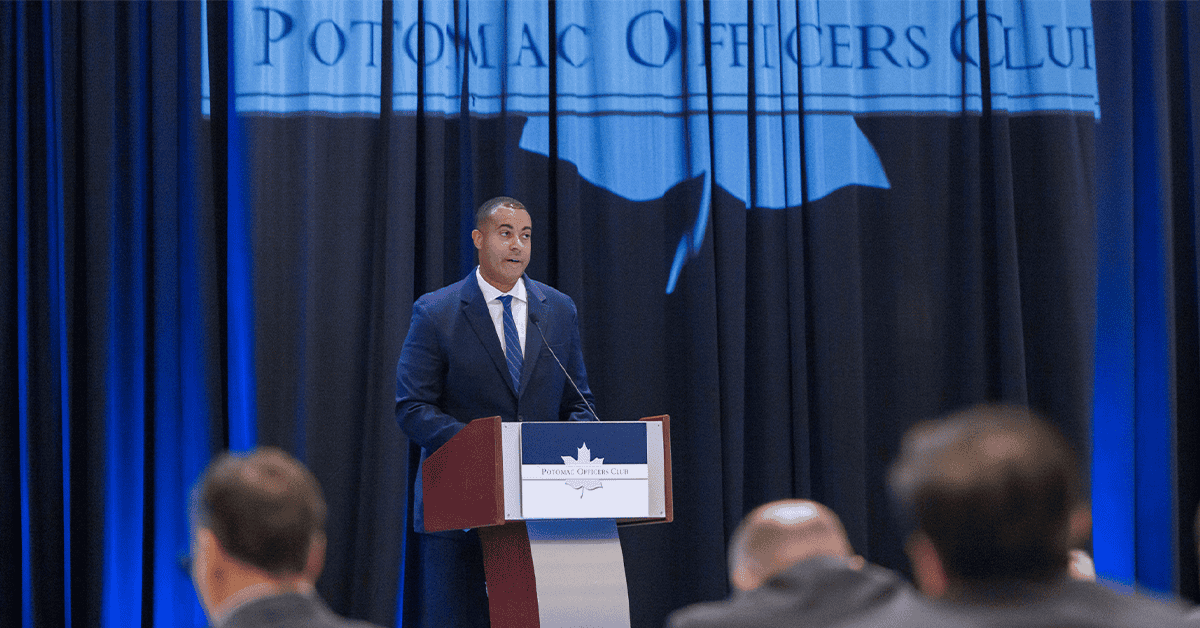The U.S. Navy and Marine Corps are in the midst of one of the most challenging recruitment environments in the last two decades. But according to Hon. Franklin Parker, assistant secretary of the Navy for manpower and reserve affairs, the tides may be turning in response to multiple efforts underway within the two services.
During his keynote speech at the Potomac Officers Club’s 2024 Navy Summit, Parker highlighted people as an essential component of Navy Secretary Carlos Del Toro’s new maritime statecraft.
“Integral to invigorating American shipbuilding is building the strong and skilled workforce we require to support it,” Parker told the audience.
“My team and I are focused on efforts to take care of our people by improving the quality of service for our sailors, Marines, civilians and their families by building and retaining a strong and resilient force that draws from the complete range of talent, perspectives and abilities of our nation and by building and strengthening relationships both within and outside government to advance continuous opportunities for service,” he continued.
The Recruitment Environment
Parker noted that the challenging recruitment environment can be attributed to many factors, such as declining eligibility and lower propensity to serve, strong economy and competitive labor market, low unemployment, population and demographic shifts, a fragmented media environment, lack of familiarity of the benefits of service, misconceptions about the realities of service and various other factors.
The Navy Assistant Secretary said recruiting is the service branch’s “top personnel priority, as the strength, health and effectiveness of our force depends on the success of our recruiting interest.”
Inside the Navy’s Recruitment Initiatives
The Navy and Marine Corps are both working on significant efforts to modernize recruiting operations in response to demographic and population shifts. For example, the Marine Corps recently executed the largest reorganization of its recruiters in more than two decades, shifting resources to open stations in growing markets like Ohio, Austin, Texas and Orlando, Florida.
To address declining eligibility among recruits, the Navy instituted the Future Sailor Preparatory Course. The course has a fitness track and an academic track, and it’s designed to help young people overcome physical or academic limitations in order to become eligible to serve.
Some of the other recruitment initiatives in place include appointing a two-star admiral as commander of the Navy Recruiting Command, enacting policy changes to expand the eligible population to serve and establishing a recruiting operations center.
“As a result of these collective measures, both services have generated significant recruiting momentum, which will only continue to build a sustained focus on our essential recruit mission,” said Parker. “While we are making significant headway addressing current recruiting challenges, the recruiting environment remains a difficult one. As a result, our recruiting efforts will require sustained attention and an adaptive approach that can continue to evolve along the society.”















